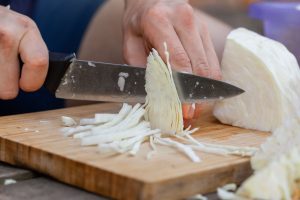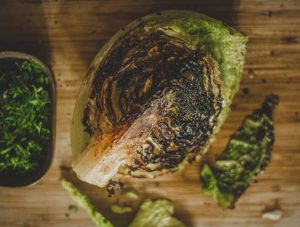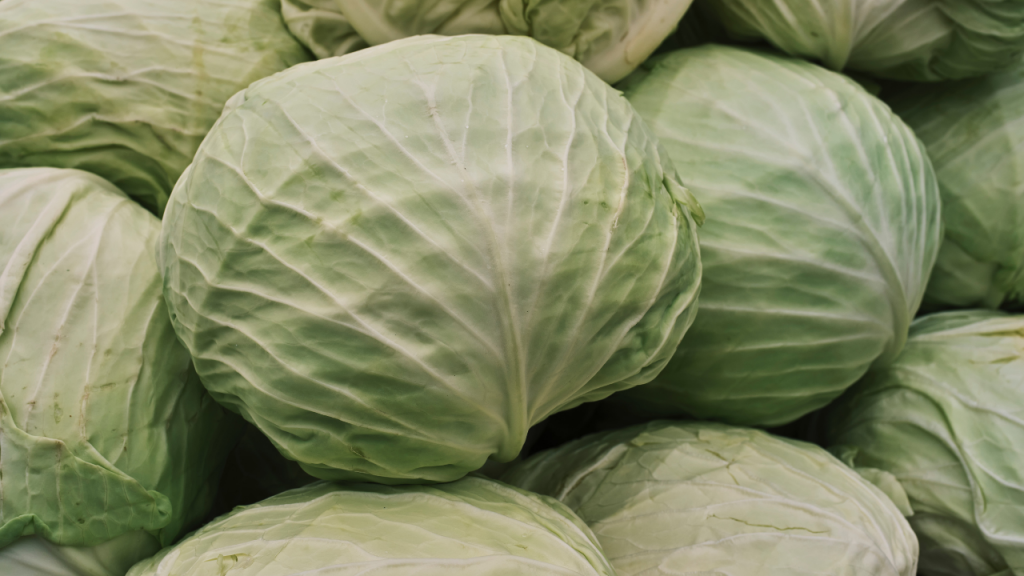Cabbage is a versatile and budget-friendly vegetable. From its crisp, raw form in salads to its comforting presence in soups and stews, cabbage offers a wealth of culinary possibilities. Whether you’re a seasoned cook or just beginning your culinary journey, here’s your guide to mastering the art of cooking cabbage.
Preparation

Proper preparation is key to cooking cabbage. There are a few steps you’ll need to consider first before you start cooking.
Selecting the right cabbage: Choose cabbage heads that are firm, with vibrant colour and tight leaves. Avoid those with blemishes, bruises, or wilted outer leaves.
Cleaning: Remove any outer leaves that appear damaged or wilted. Rinse the cabbage head under cool water to remove any dirt or debris.
Cutting and core removal: Depending on your recipe, cut the cabbage into wedges, quarters, or slices. To remove the tough core, cut a wedge along the core’s edge, and then remove it from each slice.
Ways to cook cabbage
Cabbage’s inherent versatility allows this vegetable to shine through a variety of cooking techniques. To properly cook cabbage to your desire, it’s important to know what to do for the cooking technique you want to use.
Steaming: Steaming cabbage preserves its natural crunchiness while enhancing its flavour. Simply place cabbage wedges or slices in a steamer basket over boiling water. Cover and steam for about 5-7 minutes until tender yet still crisp.
Boiling: Boiling cabbage is ideal for soups, stews, or recipes that call for softened cabbage. Place wedges or slices in a pot of boiling water for approximately 8-10 minutes. For added flavour, use vegetable or chicken broth instead of plain water.
Sautéing: Sautéing cabbage creates a delightful blend of textures and flavours. Heat a pan with a drizzle of olive oil or butter over medium-high heat. Add shredded or chopped cabbage and stir-fry for 5-7 minutes until it’s slightly wilted and tender.
Braising: Braising cabbage results in a tender and flavourful dish. Begin by searing cabbage slices in a pan until lightly browned. Then, add liquid (such as broth, vinegar, or wine), cover, and simmer on low heat until the cabbage is tender and infused with the liquid’s flavours.
Read more: Health benefits of drinking cabbage water
Tips to consider when cooking cabbage

Don’t overcook: Cabbage can quickly turn mushy if overcooked. Keep a close eye on its texture to achieve the desired level of tenderness.
Seasoning: Enhance the flavour of your cabbage by seasoning it with herbs, spices, or condiments like garlic, ginger, caraway seeds, or balsamic vinegar.
Combination cooking: Experiment with combining cooking methods. For example, sautéing cabbage before adding it to a soup can infuse richer flavours.
Pairing ingredients: Cabbage plays well with various ingredients. Incorporate onions, carrots, bacon, or even apples to add depth and complexity to your dishes.
Cabbage’s culinary potential knows no bounds. With proper preparation and these cooking techniques, you’ll be cooking cabbage like a pro and unlocking the flavours and textures that make cabbage a delightful addition to your meals.
Written by Maegan-Leigh Jacobs
Feature image: Pexels

